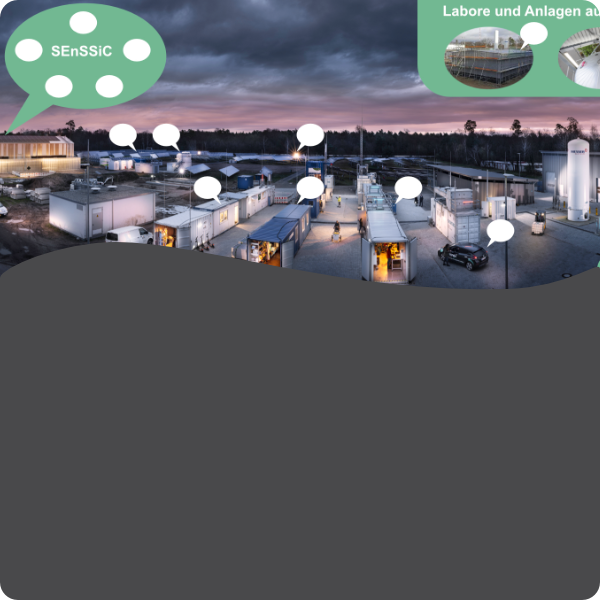Welcome to the Energy Lab
The energy transition is accompanied by many questions: How can energy be generated in an environmentally friendly way and stored with low losses?
What happens when the sun doesn't shine and the wind doesn't blow? And what if more electricity is suddenly needed?
To answer these questions, the Energy Lab is researching the intelligent linking of various energy generation, storage and supply options.
Research for the energy transition
The aim is to achieve climate neutrality by 2045 and to reduce greenhouse gas emissions by at least 65% by 2030 compared to 1990 levels. However, wind or solar energy cannot be generated consistently everywhere. Energy is often needed away from where it is generated and peak loads are to be expected at certain times. This dilemma must therefore be solved, because affordable and environmentally friendly energy should no longer remain a utopian dream.
As Europe's largest research infrastructure for renewable energy, the Energy Lab is taking on this major task. Here, the intelligent networking of environmentally friendly energy generators and storage methods is being investigated. In addition, energy systems of the future are simulated and tested on the basis of real consumer data. A system network links electrical, thermal and chemical energy flows as well as new information and communication technologies. The aim of the research work is to improve the transportation, distribution, storage and use of electricity and thus create the basis for the energy transition.
The Energy Lab is a project of the Karlsruhe Institute of Technology (KIT) in cooperation with the Helmholtz Centers German Aerospace Center (DLR) and Forschungszentrum Jülich (FZJ).
The Federal Ministries of Federal Ministry of Research, Technology and Space (BMFTR) and for Economic Affairs and Energy as well as the Baden-Württemberg Ministry of Science, Research and the Arts (MWK) are funding the Energy Lab.

At KIT, the Hydrogen Integration Platform (HIP) is making great progress: foundations for containers and pipelines are complete, and the control room is in place. Fuel cell systems for the H2Rail project will follow soon. Meanwhile, the hydrogen liquefier for AppLHy! is on its way from New Zealand. Starting in Q1 2026, it will produce up to 75 kg of liquid hydrogen per day—supplying projects at ITEP, other KIT institutes, and partners.
Construction Chronicle of the HIP Facility
From November 26–28, 2025, the Karlsruhe Institute of Technology (KIT) hosted a hackathon focused on AI, mobility, navigation, and cybersecurity. Together with Mercedes-Benz Tech Innovation (MBTI) and the Institute for Automation and Applied Informatics (IAI) – with key support from Gustavo Sánchez – students developed creative solutions ranging from voice control to quantum-inspired route planning. All results are open source and will be tested in real vehicles. A follow-up is planned for 2026!
Website IAI
From September 6–9, 2026, the Karlsruhe Institute of Technology (KIT) will host the International Symposium on Feedstock Recycling of Polymeric Materials (ISFR). The focus will be on innovative processes for converting plastic waste into valuable raw materials – from thermochemical to catalytic methods. The goal is to significantly advance the circular economy and sustainable waste management. Abstract submissions open on November 1, 2025.
Website ISFR 2026



